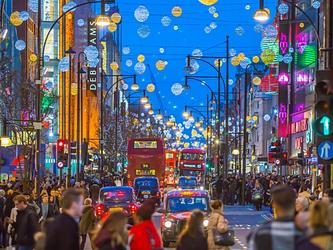Decoding an audience’s true motivations
We’re bored of being told that we live in a world of accelerated change. We know. The marketing community has gamely been playing catch up for a while now and, except for the odd Cannes crowd pleaser, the most meaningful new technologies and platforms have been adopted into mainstream brand activity.
But has the insights industry been doing its bit? The evidence that traditional market research methodologies are no longer up to the task is there for all to see – the polls keep getting it wrong. Just look at the surprise Brexit result and the election of Trump.
Research companies have embraced new technologies as authentic and efficient ways of capturing data, but there’s still a strong reliance on respondents’ reported opinions. But besides wiring people up to electrodes to see what they’re really thinking, what other options do we have?
Language analysis is one way of tapping into the underlying psychology of an audience. Instead of focusing on what respondents say, we listen to how they say it. Language can be a window into what people are really thinking; we can control the content of our speech but are less able to control the language we frame it with. The right language analysis tools make it possible to decode the psychological drivers that shape audience behaviour.
Most research methodologies rely on audience perception. In contrast, a language-based approach assesses audience cognition. The two are very different: perception refers to the way in which something is regarded, understood or interpreted. Cognition is the mental action of acquiring knowledge and understanding. Measuring perception is simply documenting what people want to tell you. Measuring cognition is a more scientific and reliable way to understand your audience, and to effect specific and measurable behaviour change.
Here’s an example: Imagine asking someone to describe how they go about cooking a new dish, booking a holiday or learning how to use a new mobile phone. If they use words like “watch”, “read” and “search” they are displaying a predominantly visual learning style. Brands looking to pattern-match this audience should therefore present information visually. If they say things like “ask a friend”, “listen” and “chat”, they are revealing an auditory learning style, and brands should use conversation-based messaging for this audience. If they talk about “just having a go” or “feeling my way through it” they process information kinaesthetically, and brands looking to connect with this audience would be recommended to get their product into consumers’ hands.
This is just one small area where decoding respondents’ language can reveal something useful that they couldn’t tell you themselves. In our experience there are many other lexical parameters which combine to create the unique psychological profile of an audience.
Besides language, there are several other new techniques and technologies that shift the focus away from reported opinions and tap into consumers’ unconscious motivations. Eye tracking, facial analytics, wearables and biometric response data are available for early adopter clients that want to try them. However, active usage is still low ( 2018 GRIT report). What’s more, integrating the output from these methodologies into an audience analysis is in its infancy, and most clients prefer the tried and tested approach. I recently spoke to one agency that offers EEG-based research and they admitted that the equipment had so far remained in its box.
The world is changing, and the research industry needs to keep up. New methodologies need to be more than an add-on to tick the modernity box. Proactivity must come first, then the business will follow.
Rachel Emms is strategic development director at Verbalisation

We hope you enjoyed this article.
Research Live is published by MRS.
The Market Research Society (MRS) exists to promote and protect the research sector, showcasing how research delivers impact for businesses and government.
Members of MRS enjoy many benefits including tailoured policy guidance, discounts on training and conferences, and access to member-only content.
For example, there's an archive of winning case studies from over a decade of MRS Awards.
Find out more about the benefits of joining MRS here.












0 Comments